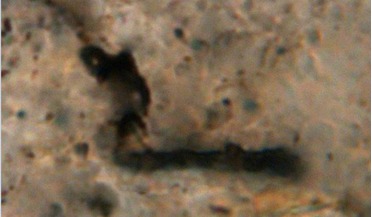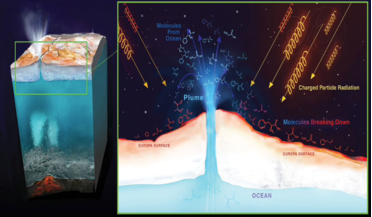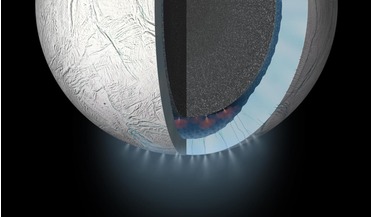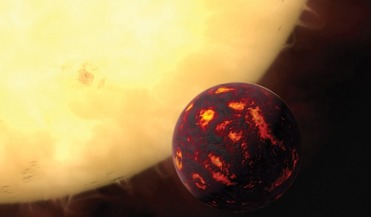 September 2016
URBOCOP: saving planet Earth
September 2016
URBOCOP: saving planet Earth
... the century when humanity has made unprecedented progress - but it will be defined as one of realising that our planet’s biosphere is fragile in the face of both man’s technological advances and natural disasters originating in space. Among these...
 20 December 2017
Methane-producing microorganisms suggest life in the Universe is common
20 December 2017
Methane-producing microorganisms suggest life in the Universe is common
A new analysis of 3.465 billion year old microorganisms from Western Australia that apparently produced methane gas, is adding weight to the idea that life in the Universe is indeed common. The fossil microorganisms have been the subject of intense ...
 25 July 2018
Radiation on Europa dictates where search for life begins
25 July 2018
Radiation on Europa dictates where search for life begins
With harsh radiation constantly pouring down on Europa, when NASA’s Europa Clipper or ESA’s JUICE mission heads to the small Jovian icy moon in a few years, would their instruments be able to detect signs of life on its surface or will a lander have...
 24 January 2020
New study suggests Enceladus' oceans more habitable than previously thought
24 January 2020
New study suggests Enceladus' oceans more habitable than previously thought
Searching for life in the subsurface seas of Enceladus, Saturn’s sixth-largest moon, just got a boost, as a study of gases and frozen sea spray released through cracks in the moon's icy surface points to evidence of hydrothermal vents on the ...
 May 2018
PLATO the habitable zone explorer
May 2018
PLATO the habitable zone explorer
... looking for We now know of between 2,900 and 5,300 exoplanets (depending on whether you include ‘validated’ planets and/or ‘candidate’ planets in your count or not), and the rate of discovery shows no sign of slowing down. It is the variety of those...
 March 2017
Twinkle - a mission to unravel the story of planets in our galaxy
March 2017
Twinkle - a mission to unravel the story of planets in our galaxy
... for our mission that is easy to remember and doesn’t require background knowledge of science, history or culture. As a transiting planet makes the host star appear to twinkle, this seemed an appropriate choice. The words of Twinkle, Twinkle Little...